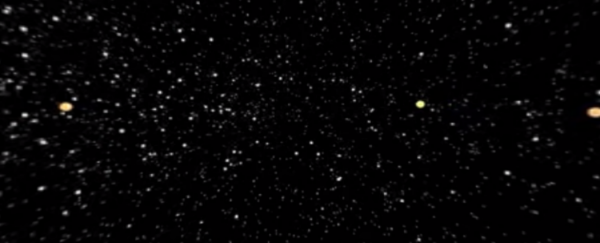Put together by astronomer Scott Manley from Armagh Observatory in the UK in honour of Asteroid Day (30 June), this awesome visualisation shows us what the night sky would look like if all the 5,000 asteroids that are nearest to Earth right now were as visible as the stars and planets of our Solar System. As you can see, things start to get a hell of a lot more crowded up there when we can actually see everything that's whizzing are whirring hundreds of thousands of kilometres around us.
As Manley explains in the video, asteroids aren't visible to the naked eye like stars and planets are because they're much smaller and fainter. But they move much quicker, and by speeding up time, Manley is able to show us the motion of all these asteroids as they move relative to Earth's rotation. "You can see them following their paths, flying near to the Earth and going away," says Manley. "Their motion is a combination of the Earth's motion and the asteroids' motion."
How do we know which ones to keep the closest eye on? Well, those are the asteroids that are zooming through the visualisation the fastest.
Now that we've established that there are a whole lot of asteroids flying around Earth on all kinds of different trajectories, Manley would like to let us know that these are just the Near-Earth Objects (NEO) that we know about. Current estimates state that we've probably only found about 1 percent of the NEOs that are actually in existence, which is actually pretty intimidating. One of the reasons for this is surprisingly simple - we can't point a telescope at the Sun, so all the asteroids in its viscinity at the time of observation will be undetected.
But there's a solution to this, and it involves installing a space telescope somewhere between Earth and the Sun, where it would be able to detect many NEOs that we simply can't visualise from down here.
Check out Manley's awesome visualisation above, and if you've always wanted to help NASA discover new asteroids, we've got you covered.
H/T: SPLOID
